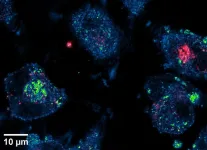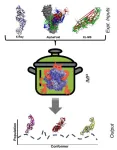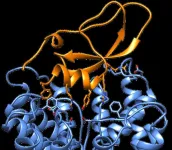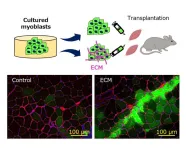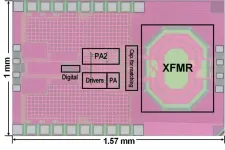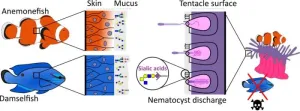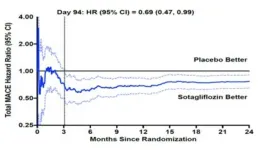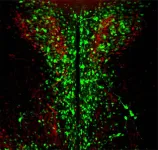(Press-News.org) ROCKVILLE, MD – Phytoplankton, tiny plant-like organisms in the ocean, are incredibly important for life on Earth. They're a major food source for many sea creatures and produce almost half the oxygen we breathe. They also help control the climate by soaking up a lot of carbon dioxide, a gas that contributes to global warming.
Scientists want to learn more about how these phytoplankton use sunlight to make energy and oxygen, which can be useful in the context of environmental monitoring during global climate change. However, it's tricky to study this because the usual methods only give an overall average for a large group of phytoplankton, hiding the differences between individual cells, or they only give limited measurements of individual phytoplankton.
Now, researchers at The Hebrew University of Jerusalem in Israel have come up with a new way to study these organisms. They've built a system that can measure the light given off by individual phytoplankton cells, which tells them how efficiently each individual is using light. This new technique will help scientists better understand how different types of phytoplankton react to changes in their environment. The work will be presented at the 69th Biophysical Society Annual Meeting, to be held February 15 - 19, 2025 in Los Angeles.
“I look at how individual plankton react to changing conditions by looking at the light that they dispose of—or in scientific terms I look at fluorescence lifetimes. Basically, it’s how the phytoplankton convert light to energy they can use later,” said Paul Harris, who led the study.
This new system uses a special microscope to get a close look at individual phytoplankton cells which are sent down tiny channels. It measures the different colors of light the cells give off, which tells scientists a lot about how they're using light to make energy.
So far, Harris and colleagues have used the system to study three different types of phytoplankton, looking at how they change throughout the day and how they react to brighter light. What they found is that each type of phytoplankton has its own unique way of adjusting to changes in light, kind of like how some people put on sunglasses when it's sunny, while others might opt for a hat. Each species has its own way of dealing with light, and uses different strategies for surviving sudden changes in their conditions.
"We need to understand how these phytoplankton respond in order to predict and observe what's happening in the oceans, especially with regard to climate change as oceans warm," said Harris. “We hope to give some insight into how species are going to change,” he said.
The system could also help in predicting harmful algal blooms, which can spell disaster for fish and other species in the ecosystem and even poison humans if consumed. "We could use this tool to give advanced warning of algal blooms," he pointed out.
The ability to differentiate species and determine how they are using light and energy offers a powerful tool for assessing the health and productivity of phytoplankton populations, which are essential for marine food webs and global carbon cycling.
Image Caption:
This new tool measures how individual phytoplankton cells are using energy. Image courtesy of Paul Harris.
###
The Biophysical Society, founded in 1958, is a professional, scientific Society established to lead development and dissemination of knowledge in biophysics. The Society promotes growth in this expanding field through its annual meeting, publications, and committee and outreach activities. Its 7,000 members are located throughout the United States and the world, where they teach and conduct research in colleges, universities, laboratories, government agencies, and industry.
END
ROCKVILLE, MD – The Apennine brown bear, also known as the Marsican brown bear (Ursus arctos marsicanus), is a unique and critically endangered subspecies of brown bear found only in the remote and rugged Apennine Mountains of central Italy.
A new study by the Italian Endemixit project (endemixit.com) reveals a potentially critical genetic flaw in the endangered Apennine brown bear population of Italy, offering insights that could help boost conservation efforts. The work will be presented at the 69th Biophysical Society Annual Meeting, to be held February 15 - 19, 2025 in Los Angeles.
This distinct population has been isolated for centuries, evolving unique physical ...
ROCKVILLE, MD – Brain inflammation, while a crucial part of the body's immune response, takes on a detrimental role in Alzheimer's disease. Unlike the acute, short-lived inflammation that combats infection, the inflammation associated with Alzheimer's becomes chronic and persistent. Scientists have been trying to understand why this happens.
New research reveals key differences in how the brain's immune system responds to the disease compared to a bacterial infection. The work will be presented at the 69th ...
ROCKVILLE, MD – In a surprising discovery, scientists have found that the heart possesses "sweet taste" receptors, similar to those on our tongues, and that stimulating these receptors with sweet substances can modulate the heartbeat. This research opens new avenues for understanding heart function and potentially for developing novel treatments for heart failure.
While taste receptors are traditionally associated with the tongue and our ability to perceive flavors, recent studies ...
ROCKVILLE, MD – Viruses, like those that cause COVID-19 or HIV, are formidable opponents once they invade our bodies. Antiviral treatments strive to block a virus or halt its replication. However, viruses are dynamic—constantly evolving and changing shape, which can make designing antiviral treatments a challenge.
But new research utilizes an innovative computational modeling approach to capture the complex and diverse shapes that viral proteins can adopt. The work will be presented at the 69th Biophysical Society Annual Meeting, to be held February 15 - 19, 2025 in Los Angeles.
This new approach, implemented in the open-source Integrative Modeling Platform ...
ROCKVILLE, MD – When scientists develop new molecules—whether for the purposes of agriculture, species control, or life-savings drugs—it’s important to know exactly what its targets are. Thoroughly understanding a molecule's interactions, both intended and unintended, is crucial for ensuring its safety and efficacy.
A cone snail toxin known to affect both insects and fish inspired Weizmann Institute scientists to develop a new way of finding molecular targets. By combining artificial intelligence with traditional ...
Tokyo, Japan – Researchers from Tokyo Metropolitan University have developed a way to treat ageing-related muscular atrophy using regenerative medicine. Conventional methods to implant myoblasts, precursors to muscle fiber, required prior scarring for the new cells to graft properly. By adding extracellular matrix (ECM) fluid into the implant, the team successfully grafted myoblasts onto healthy muscle in mice. Their technique opens the way for using implantation to treat unscarred muscle atrophied by ageing.
Age-related muscular atrophy in skeletal muscle can have a devastating impact on people’s quality ...
Three innovative design techniques substantially enhance wireless transmitter performance and can boost power efficiency and elevate data rates concurrently, as reported by the researchers from Science Tokyo, Japan. This effectively aligns with the growing demand for speed and efficiency, accelerating the widespread deployment of wireless devices. This enables synergistic operation of wireless electronic devices and better quality of modern life.
Background:
Integrating artificial intelligence (AI) into everyday life requires the interconnectedness of all electronic devices via a technology called the Internet of Things (IoT). The rapid expansion of the IoT market has ...
The clownfish-anemone living arrangement is one of the most widely recognized examples of symbiosis. Researchers have made a breakthrough in understanding how anemonefish can live safely among sea anemones without being stung by their venomous tentacles, solving a century-long mystery.
Scientists at the Okinawa Institute of Science and Technology (OIST) and their international collaborators have discovered that anemonefish have evolved to maintain very low levels of sialic acid in their skin mucus to avoid triggering the release of nematocysts (stinging cells) in ...
Sotagliflozin, a drug recently approved by the Food and Drug Administration to treat type 2 diabetes and kidney disease with additional cardiovascular risk factors, can significantly reduce heart attack and stroke among these patients, according to results from an international clinical trial led by a Mount Sinai researcher.
Sotagliflozin is a sodium-glucose cotransporter (SGLT) inhibitor. It blocks the function of two proteins, known as SGLT1 and SGLT2, which move glucose and sodium across cell membranes and help control blood sugar levels. Other SGLT2 inhibitors do not as significantly block SGLT1.
The study, published ...
PROVIDENCE, R.I. [Brown University] — Scientists discovered years ago that the hypothalamus — which helps to manage body temperature, hunger, sex drive, sleep and more — includes neurons that express the protein opsin 3 (OPN3). Far less clear, however, was what this light-sensing protein does so deep inside the brain.
A study published in PNAS suggests that OPN3 plays an important role in regulating food consumption.
“Our results uncover a mechanism by which the nonvisual opsin ...


